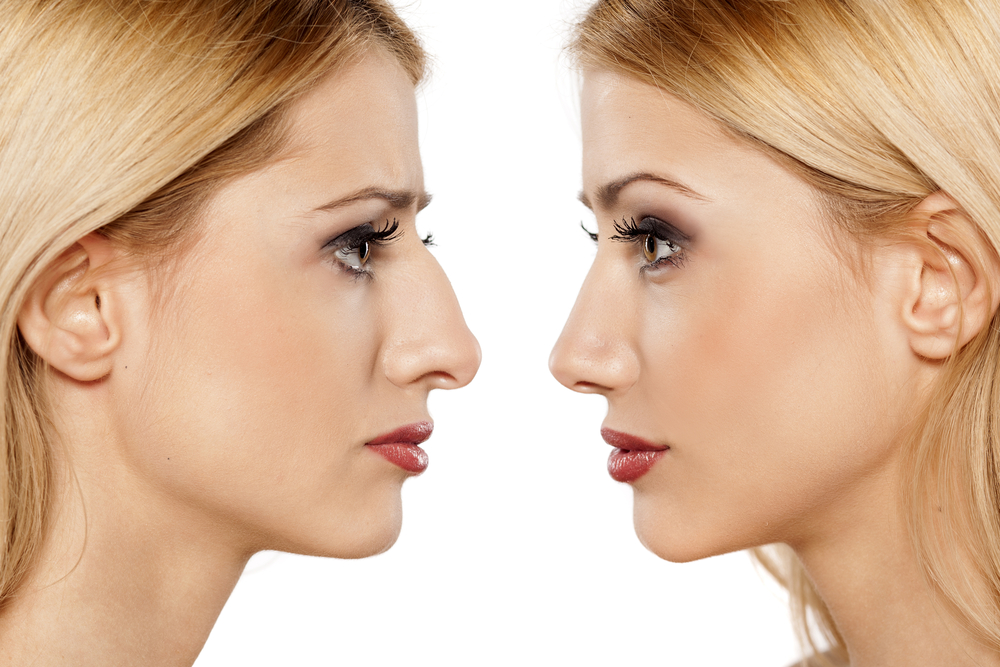Are you considering a rhinoplasty but feeling anxious about the thought of being put under anesthesia? You’re not alone. Many people experience fear and uncertainty before undergoing surgery, especially when it comes to the anesthesia process. However, with proper preparation and understanding, you can overcome these fears and feel confident in your decision to pursue a nose job. In this guide, we’ll walk you through everything you need to know about anesthesia for rhinoplasty procedures, so you can feel calm and prepared on the day of your surgery. Let’s dive in!
Table of Contents
What is Rhinoplasty?
Rhinoplasty, also known as a nose job, is a cosmetic surgery procedure that alters the shape of your nose. It can be performed to improve the appearance of your nose, correct a defect, or relieve breathing difficulties. The surgery involves making incisions in the skin and bone around your nose, which allows the surgeon to access the cartilage and bone underneath. Once the desired changes have been made, the incisions are closed and the healing process begins.
Rhinoplasty is usually performed under general anesthesia, which means you will be asleep during the surgery. This can be a scary prospect for some people, but it is important to remember that anesthesia is safe and necessary in order to ensure a successful procedure. Your surgeon will work with you to help you understand the risks and benefits of anesthesia so that you can make an informed decision about what is right for you.
What is Anesthesia and How Does it Work?
Anesthesia is a medical treatment that uses drugs to keep you from feeling pain during surgery. It works by blocking pain signals from the brain to the body. There are different types of anesthesia, and the type that you have will depend on your health, the type of surgery you’re having, and your preferences.
Local anesthesia numbs a small area. You’ll be awake but won’t feel pain in the numbed area. This is usually used for minor procedures, like removing a wart or stitching a cut.
Regional anesthesia numbs a larger area. You may be given medicine to make you sleepy first. With regional anesthesia, you won’t feel pain in the numbed area, but you may be able to hear and remember what’s going on around you. This is often used for procedures like childbirth and knee surgery.
General anesthesia is when you’re given medicine to make you unconscious. You won’t feel any pain during surgery, but you won’t be aware of what’s going on around you either.
Types of Anesthesia for Rhinoplasty
There are several types of anesthesia that can be used for rhinoplasty, and the right type will be determined based on the specific procedure being performed as well as the preferences of the patient. Local anesthesia is the most common type of anesthesia used for rhinoplasty, as it numbs the area around the nose so that the surgeon can work without causing pain. However, general anesthesia may be necessary for more complex procedures. Patients who are anxious about surgery may also opt for sedation to help them relax during the procedure.
Pros and Cons of Each Type of Anesthesia
There are three main types of anesthesia used in rhinoplasty surgery: local, general, and sedation. Each has its own set of pros and cons that should be considered before surgery.
Local anesthesia is the most common type of anesthesia used in rhinoplasty. It numbs the area around your nose so you won’t feel any pain during the procedure. The main advantage of local anesthesia is that it’s less risky than general anesthesia. There are also fewer side effects associated with local anesthesia, such as drowsiness and nausea. However, local anesthesia can cause some discomfort during the procedure and may not be suitable for everyone.
General anesthesia puts you to sleep during the surgery. This means you won’t feel any pain or discomfort during the procedure. The main disadvantage of general anesthesia is that it’s more risky than local anesthesia. There are also more side effects associated with general anesthesia, such as drowsiness, nausea, and vomiting. However, general anesthesia may be the best option for some people who have a high level of anxiety about undergoing surgery.
Sedation is a type of light sleep that’s induced by medication. You’ll be awake during the surgery but won’t feel any pain or discomfort. The main advantage of sedation is that it’s less risky than general anesthesia and has fewer side effects. However, sedation can cause some people to feel dizzy or lightheaded during the procedure.
Different Ways to Overcome Fear of Anesthesia
Fear of anesthesia is a common concern among people considering rhinoplasty. While it is normal to feel some anxiety about undergoing surgery, there are ways to overcome this fear. Here are a few different ways to overcome the fear of anesthesia:
1. Talk to your surgeon about your concerns. This is a great way to get more information about the anesthesia process and what will happen during your surgery. Your surgeon can also help you develop a plan to manage your anxiety.
2. Take some time to learn about anesthesia and how it works. There are many resources available online and in libraries that can help you understand more about this topic.
3. Talk to someone who has had experience with anesthesia. This can be a family member, friend, or even another patient who has already had rhinoplasty surgery. Hearing first-hand accounts can be very helpful in managing your own fears.
4. Visualize yourself successfully undergoing surgery and recovery. This positive visualization can help reduce anxiety and increase confidence going into surgery.
5. Choose an experienced surgeon who you feel comfortable with. This will help put you at ease knowing that you are in good hands during your procedure.
6. Make sure you have anesthesiologist whom you trust and feel comfortable with as well. This person will be responsible for keeping you safe and comfortable during surgery so it is important that you have confidence in them
Tips for Recovery After Rhinoplasty Surgery
Recovery after rhinoplasty surgery is different for everyone. The key is to take it easy and listen to your body. Here are a few tips that may help you recover:
1. Get plenty of rest. Sleep with your head elevated on pillows to help reduce swelling.
2. Drink lots of fluids, but avoid alcohol as it can interfere with healing.
3. Eat healthy foods and take vitamins to promote healing.
4. Avoid strenuous activities or anything that puts pressure on your nose for at least the first week after surgery. Walking is fine, but no heavy lifting or exercise until cleared by your doctor.
5. Keep your head up! This helps reduce swelling and speeds up recovery time.
Conclusion
To sum it up, rhinoplasty patients should not be afraid of anesthesia. With the proper research and preparation, you can minimize any risks associated with anesthesia and ensure a safe and successful procedure. By understanding the basics of anesthesia, discussing your concerns with your doctor, taking necessary pre-operative steps to prepare for surgery, and familiarizing yourself with other forms of anxiety management techniques such as mindfulness meditation or hypnosis therapy, you can overcome any fears you have regarding anesthesia.


